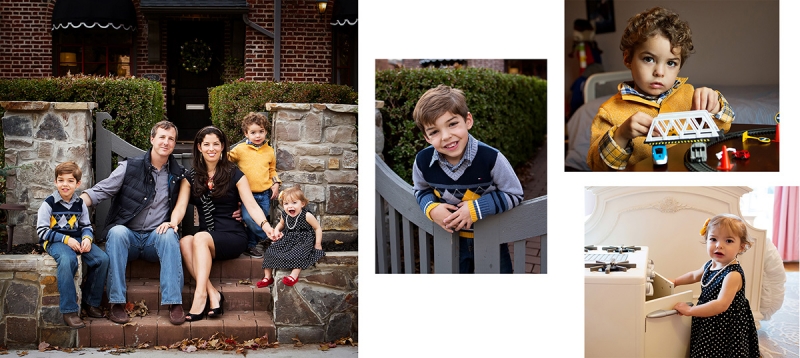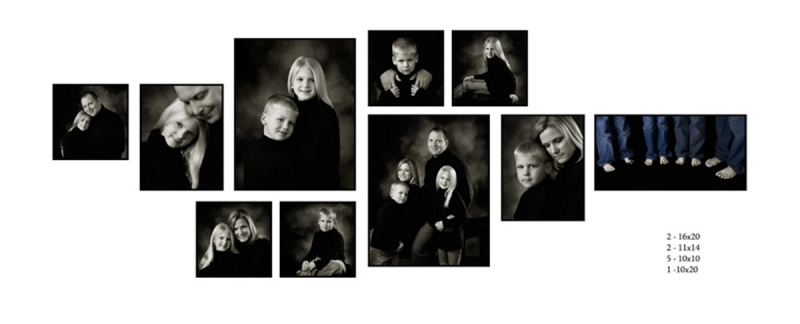Act Two
Participating in photo competitions not only improves your skills, it gives you bragging rights with clients, too.
• May 2016 issue
Leslie Hoyt nails the second phase of her professional life
For Tulsa, Oklahoma, portrait photographer Leslie Hoyt, M.Photog., CPP, photography began as a source of entertainment. Hoyt retired from a career in the software industry in 1999 to stay home with her children. Being a stay-at-home mom was challenging and rewarding in its own way, but after a couple of years, she started to feel the itch to get back into an adult pursuit.
“Honestly, I was bored,” says Hoyt. “I had retired. I was staying home with my kids. That was great, but I’m a goal-oriented person and was looking to get involved in something more.”
Hoyt’s husband knew that she’d been interested in photography forever, so he set her up with a point-and-shoot digital camera and a nature photography class. “After that, it was all over,” says Hoyt. “I was hooked.”
Hoyt bought a Canon DSLR and dove into photography, taking more classes, participating in forums, and practicing as much as possible. She decided to learn about taking photographs of people, so she joined PPA in the early 2000s and started taking classes through the association. In particular, a portraiture class by Darton Drake changed her entire perspective. “When I came across Drake’s work, I was inspired,” she recalls. “I loved the style and wanted to learn how I could create my own style of portraiture that built on those fundamentals. It was a real turning point in my development as a photographer.”
Down to business
At first, Hoyt didn’t know she wanted to make a business out of photography. Initially, she was just fascinated by the art form and driven to learn more. But her progression led her closer to professional practice. She started with nature, then she learned to photograph people, then she learned to capture emotion, then she learned to illustrate relationships, then she learned how to incorporate professional-grade lighting, and suddenly she was ready to put it all together.
As she eyed the move to professional practice, Hoyt began participating in an online forum and started soaking up knowledge from experienced pros who were moving from traditional film capture and processing to digital methods. “It was a fascinating time to get into photography,” says Hoyt. “Digital was still somewhat new, and there were lots of people transitioning into it. A lot of these people were master photographers and other longtime pros. A lot of the big names in the industry were trying to figure it out. So there was a lot of learning going on in the industry, not just from the newbies, but from the establishment as well.”
Hoyt used this environment to establish a photography business the right way. She got feedback from people who knew the industry and were figuring out how to use the technology to their advantage. She learned from the beginning how to create an effective business model, how to work with digital files, and how to create a product list from the image enhancement options afforded by Photoshop. As a result, she was able to skip a lot of typical rookie mistakes related to pricing and business setup.
Using the lessons she’d learned from Drake and other PPA members, Hoyt set up a home studio with a classic portrait lighting configuration that involved one light, one soft box, and one reflector. She focused on families and children as well as senior portraits.
Slowly but surely, she started picking up clients, at first through word of mouth and then through some portrait parties conducted through women’s groups. What really jump-started her business, she said, was PPA’s International Photographic Competition.
During her first year competing in IPC, Hoyt earned a merit and a great deal of confidence. She entered again and experienced more success. Over the course of the next decade, she continued competing, earning merits, and capitalizing on her success, culminating in the pinnacle of IPC achievement, a Diamond Photographer of the Year distinction in 2015.

Leveraging competition
Every time she achieved good results in competition, Hoyt made sure to let her market know about it. “People want to do business with people who are successful,” says Hoyt. “Competition is a way to show success. Whenever I post something about earning a merit or getting an award, I get a few more calls.”
Competition has profoundly affected the way Hoyt photographs, and she considers it an instrumental piece in her growth as a photographer. “The more I compete, the more I notice all the details,” she says. “I photograph looking for all the elements the judges consider, which helps improve my client work year after year.
“Family portraiture is all about relationships. So in addition to looking for those connections, I am making sure all of those elements are taken care of, all the details are in place. That attention to detail, to the whole photograph, is what distinguishes true professional photographers from everyone else.”
Hoyt favors a classic style, particularly low-key black-and-white studio portraiture. The ability to produce that work with consistent quality has been a differentiator for her in her market and helped establish her as a studio portrait photographer in a world full of on-location natural light shooters. Homing in on this style was also a strategic business decision. Lifestyle portraiture is popular and certainly beautiful in its own right, but classic studio portraiture has become more of an uncommon specialty. By carving out a niche in that area, Hoyt has established a reputation as one of Tulsa’s premier studio portraitists.

Martin family relationship gallery
People have noticed. In addition to having a strong client base, Hoyt produces almost all of the cover images for TulsaKids magazine, giving her a high-profile platform to showcase her work. She was also tapped by the producers of ABC’s “Extreme Makeover” to create portraits of a family during an episode filmed in Tulsa. “That was a lot of fun,” she recalls. “The producers showed up at the family’s home and surprised them with the announcement that they won the home makeover. I was there for the surprise and then went inside and set up an on-site portrait studio. We made portraits of the whole family and each individual, and the designers used them throughout the house. It was a fun project and really rewarding to be able to provide those images for this family.”
To follow up on the momentum she’s built for her portrait studio, Hoyt has been further refining her photographic approach to augment her product lines and bring attention back to the stories of her clients’ relationships. In particular, she’s focusing on wall galleries that tell a family’s story within the portraits. She’ll photograph the entire family and then photograph smaller groups within the family to depict relationships between siblings, parent and child, and parents.
“Photographing relationships has always inspired me, and I’m re-focusing on that in a lot of my work now,” she says. “A lot of families get regular family portraits, but they may not get those individual images that show the different connections within the family. For the parents in particular, these images take on a great deal of importance. They may not have been photographed together professionally since their wedding. These images are important, and sometimes you don’t realize how important until later.”
Jeff Kent is the editor-at-large of Professional Photographer.


 View Gallery
View Gallery


